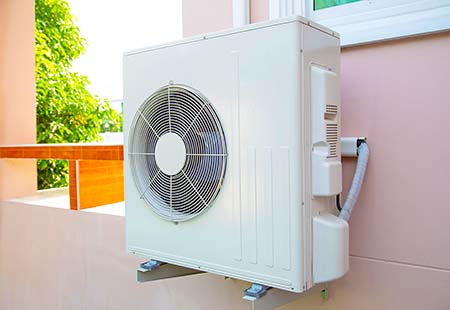
What is air source heating, designed to intensity the environment using the air outside as the primary energy source? Frequently called the heat pump, the outside unit is a fundamental part of an air source warming system. Even at low temperatures, the refrigerant in this gadget has an amazing capacity to absorb intensity from the surrounding air. Because it can draw heat from the air even in below-freezing weather, air-source heating is incredibly efficient.
Air heat pumps and air-to-water pumps are the two primary varieties of these systems. Forced-air distribution systems, such as ductwork, commonly use air-to-air intensity pumps to distribute warm air throughout a building. One of the key advantages of air is its versatility and adaptability to various building types and heating needs. Its flexibility to different building types and heating requirements is one of its main features.
Whether retrofitting an existing property or designing a new construction project, air warming systems offer installation flexibility. It integrates seamlessly into both residential and commercial settings. It offers flexible installation options for smooth incorporation into these areas. Designers create it for either new construction projects or retrofitting existing facilities. Power pumps are particularly useful for homes with limited outside areas because of their small size.
What Is Air Source Heating System?
This renewable energy technology is used to warm buildings, including homes. It functions by taking in intensity from the outside air—even in the winter—and bringing it inside to provide warmth. These systems employ heat pumps to transmit intensity from outside air into a building’s interior through ducting and fans. They can also work in reverse during warmer months, providing air conditioning by transferring power from inside to outdoors. These systems generate hot water for domestic usage. It warms a building’s interior via heat transfer from outdoor air to water.
At the core of an Air Source System is the warmth pump, which acts as the engine driving the process. It contains a refrigerant that absorbs warmness from the outside air through an evaporator coil. Even in cold weather, there is still energy present in the air, which the technique captures and concentrates using a compressor. Once the intensity is concentrated, it is transferred to the indoor warming system. Typically via a warmness exchanger, and distributed throughout the building via radiators, underfloor heating, or air ducts. One of the main advantages of an Air Source is its versatility.
In a variety of settings, it can be installed: in residential homes, in commercial buildings, and in industrial facilities. This system can be integrated with existing ones or used independently. This flexibility makes it a popular choice for retrofitting older buildings or adding fervency to new constructions. This flexibility makes it a popular choice for retrofitting older buildings or adding warmth to new constructions.

Components of an Air Source Warmth System
They are an increasingly popular choice for heating homes efficiently and sustainably. These methods consist of several key components working together to extract warmness from the outdoor air and distribute it inside the building. Understanding these components is crucial for optimizing the performance and longevity of the procedure. A breeze warmer’s exterior unit, which typically houses the compressor and heat exchanger coil, is its major component. The compressor is responsible for pressurizing the refrigerant, which facilitates the hot exchange process.
The compressor within the unit compresses this hot gas. As the gas is compressed, it raises its temperature further. In cold temperatures, this coil efficiently absorbs thermal energy from the surrounding environment. Connected to the outdoor unit is the indoor unit, which contains another warmness exchanger coil and a fan. This indoor coil serves as the interface between the refrigerant from the outdoor unit and the indoor breeze. A crucial component that facilitates the transfer of warmness between the outdoor and indoor units is the refrigerant.
This fluid undergoes a continuous cycle of compression, condensation, expansion, and evaporation to absorb and release intensity effectively. A thermostat control panel regulates the indoor climate effectively. This enables users to regulate the technique’s functioning under their schedule and preferred temperature. The warming method’s components function together harmoniously to effectively spread the intensity of the outside air within.
What Is Air Source Heating System Work?
It generates warmth within a building by absorbing temperature from the surrounding air, even in below-freezing temperatures. This system uses the renewable and freely available outside aura to warm buildings, whether they are residential or commercial. The process begins with an outdoor unit containing a fan and a refrigerant coil. from the surroundings, and the refrigerant coil absorbs warm energy from this breeze.
The absorbed warmness causes the refrigerant to vaporize, transforming it into a hot gas. A compressor within the unit compresses this hot refrigerant gas. As it compresses the gas, its temperature further increases. The hot, pressurized gas enters the building’s temperature exchanger and then releases into the interior breeze. This continuous process efficiently warms the indoor environment without the need to burn fossil fuels.
This makes systems environmentally friendly and cost-effective alternatives to traditional warming methods. It leverages the temperature naturally present in the air to provide sustainable warming solutions for homes and businesses. It contributes to energy efficiency and reduces carbon emissions.
Conclusion
It represents a sustainable and efficient heating solution that harnesses the renewable energy potential of ambient air. In residential, commercial, and industrial sectors, it is increasingly embraced with benefits ranging from cost savings to environmental stewardship.
